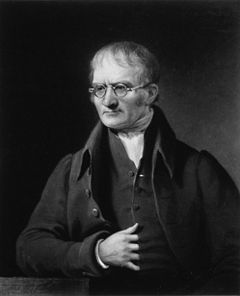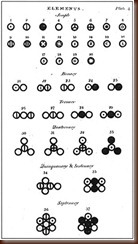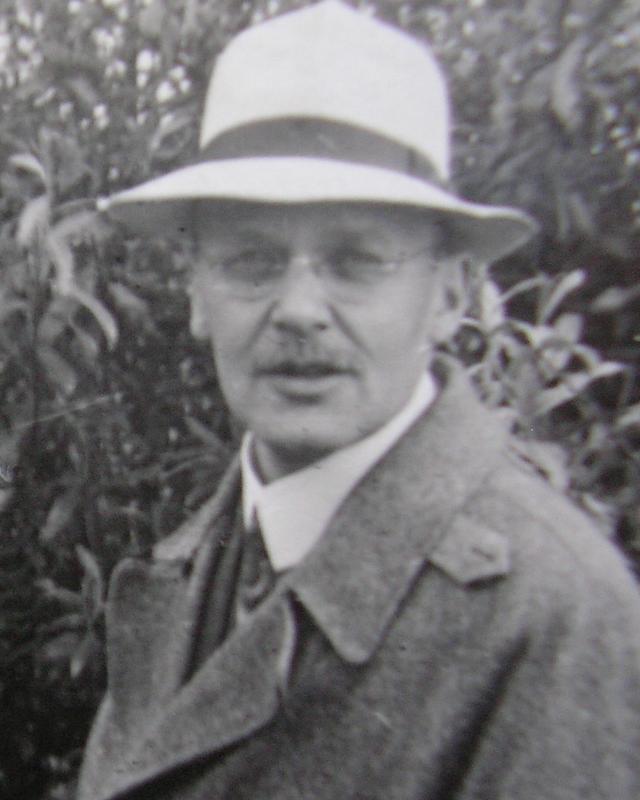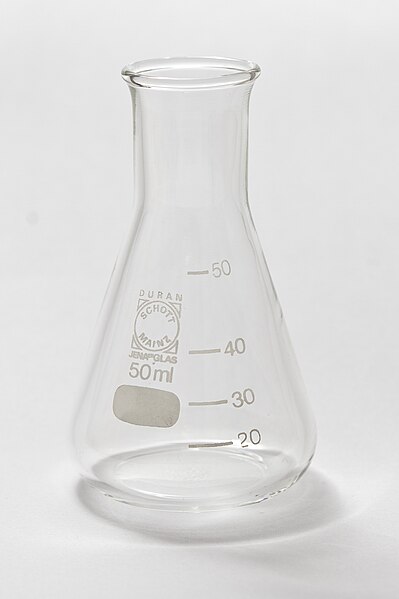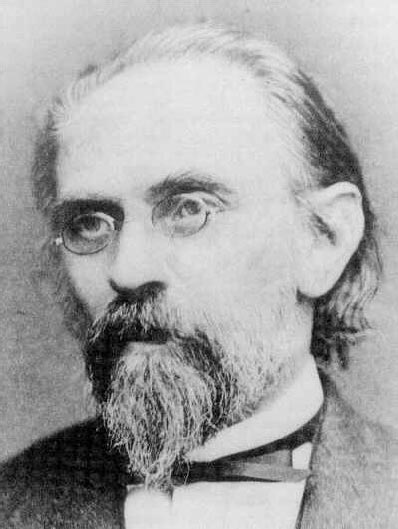 |
| Robert Bunsen (1811-1899) |
His early research was in organic chemistry, and he studied arsenic compounds and arsenic poisoning. He showed that iron oxide hydrate could be used as an antidote for arsenic poisoning, and also did extensive research into cacodyl compounds. While still a young chemist, he nearly died of arsenic poisoning and lost the use of one eye from an explosion of one of his arsenic-containing compounds. I have not found anyone to say why he discontinued his studies of cacodyl compounds, but I think it may have had to do with their obviously dangerous effects. The results of his work helped Edward Frankland and Friedrich Kekulé in their studies of chemical valency. Bunsen also studied blast furnaces, which were of great importance in the 1830s due to the huge amounts of iron being produced. He showed that over half of the fuel was lost, and worked with Lyon Playfair to improve the furnaces to be more efficient and to catch potentially useful byproducts. This work resulted in his only book, Gasometry: Comprising the Leading Physical and Chemical Properties of Gases.
When Robert Bunsen became a professor at the University of Heidelberg in 1852, he took charge of a new laboratory building. The building was equipped with gas, and during construction, Bunsen made suggestions to the building's mechanic, Peter Desaga, regarding the burners to be used. There had been previous burners used, including one by Michael Faraday, but his was an improvement on these and enabled the flame to be hot, sootless, and non-luminous. A biographer wrote at his death that "The Bunsen burner is now in use everywhere from the kitchen to the research laboratory." (Crew, p. 302) Not sure how it was used in the kitchen, but there you have it.
 |
| Bunsen and Kirchhoff's spectrometer |
If you are not familiar with the principle of a flame test, or even if you are because it is always cool, the following video is a nice demonstration of the different colors that different metals are, and shows the spectral lines too.
I will conclude with a sad reminder to back up your data. Bunsen also studied the spectra of rare earth metals, and had just finished a large manuscript on the subject. He left the manuscript on a table near a glass of water, and when he came back, he found the manuscript burnt. It took him two years to replicate the data and apparatuses. So the equivalent of hard drive crashes are nothing new.
Works by Bunsen
- Robert Bunsen, Gasometry: Comprising the Leading Physical and Chemical Properties of Gases. (London: Walton & Maberly, 1857).
- Robert Bunsen and Leon Schischkoff, "On the Chemical Theory of Gunpowder", Philosophical Magazine, supplement to vol. XV., (1858) 489-512.
- Robert Bunsen and Henry Enfield Roscoe, "Photo-Chemical Researches. Part I. Measurement of the Chemical Action of Light", Philosophical Transactions of the Royal Society of London 147 (1857), 355-380.
- Robert Bunsen and Henry Enfield Roscoe, "Photo-Chemical Researches. Part V. On the Direct Measurement of the Chemical Action of Sunlight", Philosophical Transactions of the Royal Society of London 153 (1863), 139-160.
- Henry Roscoe, "Bunsen Memorial Lecture", Journal of the Chemical Society, Transactions 77, 513-554. DOI: 10.1039/CT9007700513. This is the best biography of Bunsen that I found, and it was written by one of his friends and collaborators.
- Henry Crew, "Robert Wilhelm Bunsen", The Astrophysical Journal 10, 5 (December 1899), 301-305. DOI: 10.1086/140654.
- Floyd Lavern Darro, Masters of Science and Invention, vol. 1. (Harcourt, 1923).
- "Bunsen, Robert Wilhelm von", Encyclopaedia Britannica, vol. 4 (1911).
- James Kingsland, "Robert Bunsen did a whole lot more than invent the Bunsen burner", The Guardian, Notes&Theories: Dispatches from the Science Desk blog, March 31, 2011.
- "Robert Wilhelm Bunsen (1811-1899)", Corrosion Doctors.

